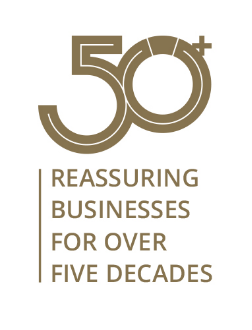Returning to work – are you ready?
As the Prime Minister urges the nation to get back to work, Richard Parslow, Head of Risk Management at Bridge Insurance, considers how businesses have coped during lockdown and provides some practical advice on how to manage the transition back to the workplace.
Lockdown has created major change to formal working places for organisations across all industries; we have seen how they have transformed with agility and adapted well; risk assessments completed and IT and HR departments busier than ever as they have worked to ensure their teams have the tech, the equipment and the support they needed to work safely and effectively from home.
The UK has experienced a massive cultural shift: according to ONS with almost 50% of Brits working from home full or part-time in June. Some companies have no immediate plans to bring their teams back – RBS joined many other big names in announcing this month that their employees would be working from home until 2021.
For many employees, home working has allowed them to save travel time and expenses and has offered a better work-life balance, as well as being kinder to the environment – they have embraced it wholeheartedly and in a recent survey two thirds of employees admitting to feeling uncomfortable about returning to a shared office.
However, for others, returning to work is about more than just a building, a town or city centre. The workplace provides a community; an alternative to home; an effective place to be part of a team. And with pressure for many organisations to open up their offices and bring people back, now is the time for businesses to start to plan and engage with their employees.
As with the initial transition to homeworking, communication with your employees is very important – at every stage of the process.
Communication
At Bridge, we started the communication process by issuing a survey to all employees over our two sites, London and Manchester. We invited the team to share their thoughts about returning to the office. It’s vital that the people who work in a business are made part of the process, and that the responses they give are used and implemented in your return to work strategy. So, speak to your team and carry out a formal survey. Be transparent and share the responses to demonstrate how you are taking everything and everyone into consideration.
As well as sharing the details of your risk assessment(s), the new rules and routines to manage these risks should be clearly communicated and enforced. Consider the varying experiences and expectations from team members – some may have been self-isolating or furloughed and hardly left their homes, to those who have been working and getting out throughout. Communication to all employees is critical and reminders of the rules will need to be ongoing and visual.
Ongoing risk assessment
A thorough risk assessment will of course need to be carried out to ensure the safety of the employees. Any business reopening will need to refer to the most up to date government guidelines and again, ensure everyone is aware of these guidelines and knows how they are being followed. Those organisations that have stayed open in some way in order to deliver an essential service will need to manage expectations carefully to avoid being complacent. Ongoing risk assessments need to be carried out to ensure everything is still being managed properly and is relevant and safe.
Premises
If you are opening up a building for the first time in months, there are some practical steps you will need to take such as flushing out the water supply to prevent legionella and having your heating and ventilation systems fully checked. Wherever possible, open windows are preferable with natural ventilation.
Shared facilities such as kitchens and bathrooms will need to be re-arranged to create a safe area, if space is limited a one-way system and/or a one-in-one-out system should be adopted. Consider the desk layout in offices – they may work better arranged side by side as opposed to facing one another, or face to face with plastic screens if the distancing rules are impractical.
Your cleaning systems will need to be robust and all employees will need to practice good hygiene. At Bridge, we will be operating a clear desk policy, so that our cleaners can disinfect easily and when people arrive work, they will be asked to wipe down their working surfaces with a disposable cloth and spray before get straight to work. A clear desk helps the cleaning process and employees should be asked to leave personal items/photographs etc at home.
Transport
Public transport is a vital element of returning to work, with understandable public concerns about overcrowded conditions and poor ventilation. Social distancing, masks and cleaning are all now in force and a think tank has also suggested that a nationwide approach to flexitime could eradicate the rush hour, enabling people to travel more safely and comfortably. Your previous 9-5 working hours could be reviewed and changed to offer safer options.
Signage
Signage on floors, doors, lifts, bathrooms, kitchens and around the workplace will remind people of the rules and help to reinforce the new measures. There should be a clear policy to support employee who are made to feel uncomfortable by others not following the social distancing rules or not adhering to the new guidelines.
Wellbeing
Ultimately, this is about the wellbeing of your staff. Yes, the government understandably wants to get the economy moving again, but you don’t want to put your business, employees or even your customers at risk of infection or put them in a situation that impacts on their mental health. We have all been working hard to look after our employees during lockdown and returning to a communal workspace requires a series of steps which need to be managed carefully.
Nobody knows yet how effective the return to the communal workspace will be, and many will opt for a new way of working, with partial or complete flexitime and working from home.
The challenges will vary depending on the profession or industry you operate within, with a multitudes of variables to be considered, assessed and managed.
As with everything since COVID hit, the key is to communicate – openly and honestly. Your risk assessment(s) needs to work in partnership with your employees and your senior management to ensure all your staff feel as represented and protected as possible during these coming weeks.
By working together and following the guidelines, this ‘new normal’ we keep hearing about will soon just be the norm.
For more information
If you would like to discuss Risk Management in your organisation get in touch with Richard Parslow on 0161 234 9376 or by e-mail at: [email protected]
You can return to our news section by clicking here.




